


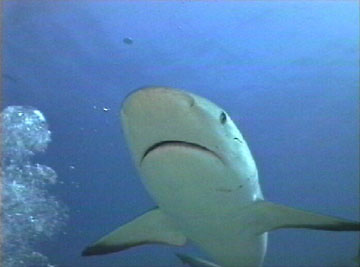
Positioning and Compositioning.
Tricky Business.December 31, 2001
By Ian SutherlandPlacing yourself and your camera in the correct spot to capture the action is an important consideration in any type of videography but nowhere is the skill more demanding than when working with wild creatures.
Positioning myself for the shot will be dictated by the creature I am trying to capture. For instance Sting Rays will only go one way when they leave the bottom. They can't swim backwards. When surprised out in the blue water, reef fish will seek the protection of the reef when they feel threatened. Putting myself between them and the reef will invariably make them swim in my direction at some point. It's all a matter of knowing the individual critter's personality traits.
In my application of underwater videography, I have developed many techniques over the years to accomplish this goal. I have the benefit of being able to position myself 3 dimensionally. Unlike most situations where the talent can at least be directed, fish tend to have a complete disrespect for complying with a videographer's needs.
However most underwater critters have a natural curiosity which when tapped into, can be used in one's favour. They also have a very acute sense of hearing and certain sounds can be implemented to tweak that very same curiosity.
Humming a tune through the regulator while exhaling will certainly illicit a reaction from most fish. Additionally, rather than moving towards them for a closer shot, allowing their reflection in the dome port of the underwater housing to attract them towards the camera will often achieve the desired result.
I'll first get their attention with the humming noise. This gets them interested in me. As they come closer to see what is causing the noise, naturally the camera will be pointing in their direction. That's when they will catch their reflection in the dome port, which brings them in even closer.
The technique has provided me with many exceptional results and I am continually experimenting with different sounds. Sharks seem to prefer lower timbres. Angelfish and smaller members of their family name react favourably to higher pitches of sound. Barracuda and many other silvery fish will respond to anything with a deep 'thumping' rythm.
Now if I could only discover how to apply this technique when working with human subjects, I would have it made.
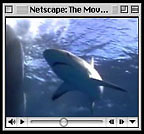
click on movie to start
300k dnl' - 56 k Dial Up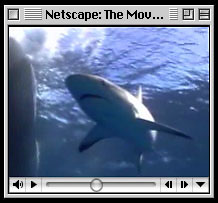
click on movie to start 1 meg dnl'
DSL - Cable
Credits: Footage was shot with the Sony VX3 camera and an Ikelite Underwater Housing. UR Pro color correction filters and Ikelite lighting unit were both implemented to achieve color saturation in less than 60 feet of water in the Bahamas archipelago.Both the Grouper and the Caribbean Reef Shark were enticed within close range of the camera using the above techniques.
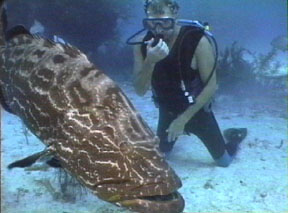
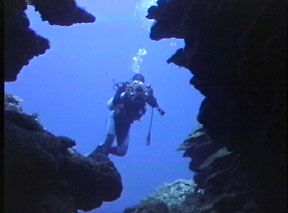
Ian Sutherland shoots, edits and produces his 'Planet Ocean' TV series for the Winnipeg audience in Manitoba, Canada. The entire series is edited with Final Cut Pro. Individual episodes have won Videography Awards of Excellence each year from 1998 to 2001.
The screen shots on this page were taken from the canvas window of FCP. The 30 second video was exported from the timeline as a Final Cut Pro movie and transformed into a QuickTime Movie using Cleaner 5.
To see excerpts from the TV series 'Planet Ocean' visit www.gaelic-video.com
copyright © Ian Sutherland 2001
All screen captures and textual references are the property and trademark of their creators/owners/publishers.